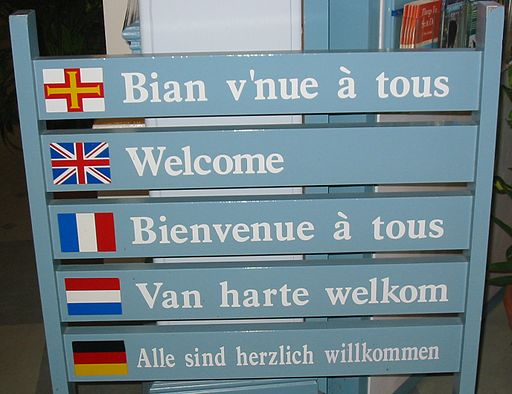Encouraging Second Languages in Schools: Part 2
Photo via Wikimedia
There’s a joke that lurks around places like Reddit and Tumblr for language lovers, and it goes a bit like this:
If you know three languages, you are trilingual.
If you know two languages, you are bilingual.
If you know one language, you are a native English speaker - variants on the joke tend to point the finger at both the British and Americans for this, and often, that is rightfully so!
So, continuing with our theme of looking at compulsory foreign language education in our schools, who is to blame for our language failings? Is it down to the individual, or the school system created for us?
Let’s get back to it!

Photo via Pixabay
Russia
Since Russia is so vast that it spans parts of both Europe and Asia, we’ll give them a separate mention here. This may surprise you given what the world view is of Russia, or perhaps those more cynical amongst us are not surprised at all. Here’s a quote from Russia’s Education and Science Minister Dmitry Livanov:
“[Foreign language] is not simply a communication tool, it also develops children's memory and intellect,”
So if Russia can see the importance of foreign languages for its citizens, it is bemusing that other countries can’t. In Russian schools, students are most likely to learn English, followed by German, French and Spanish.
On to Oz
Foreign language learning has been compulsory in Australia for some 30 years now, and back in 2014, 40 preschools trialed teaching a second language from a very early age. Australian schools offer a wide range of language options, including: Japanese, French, German, Mandarin, Indonesian, Italian, Greek, Vietnamese, Spanish, and Arabic, as well as Aboriginal languages and Auslan in some parts of the country.
Australian linguists, however, remain concerned. Because despite all of the languages offered to Australian students, this is not seen consistently across the country, and language learning seems to be on the decline. There is also the worrying trend for students already speaking more than one language at home, in losing their native tongues. Indigenous languages are just not given the same focus and importance as their language counterparts, meaning children whose mother tongues are these languages may only hear them at home, and will slowly be convinced by their schools systems that they are not relevant.

Photo via Pixabay
Africa
Much like Asia, because of the richness of languages already spoken across Africa and varying from country to country, the need for foreign language learning in schools appears to be constantly up for debate. In South Africa for example, where there are 11 official languages, some parents are in uproar at the prospect of Mandarin being put on the curriculum as a foreign language, when not all of those official languages are offered first.
There is also a push-pull between Afrikaans and English, with linguists fearing that in order to get ahead, students are encouraged to ‘replace’ their Afrikaans with English at any given opportunity. English-speaking is seen as an asset for students by some, and as a detriment to real African languages by others.
Learning a new language? Check out our free placement test to see how your level measures up!
The Americas
Let’s start at the top of North America because, oh, Canada… where the options for language learning in Canadian schools are likely already obvious: in English-speaking parts of Canada, the dominant foreign language to learn is French, and in the French-speaking parts, it is English.
Next, let’s head all the way south, avoiding that troublesome bit in the middle (or saving it until last, depending on how you see things). And for the apparent glut of ESL vacancies throughout South America, we could be forgiven for thinking that English is the go-to foreign language of choice yet again. Which it is, generally speaking, for the most part. However.
In Brazil, the two foreign languages school students are most likely to learn, are English and Spanish. Venezuela focuses on English, though also teaches French, Italian, Greek, and Latin - which is compulsory for two years as part of the humanities. Peru teaches English as a foreign language, as does Chile and Argentina. Okay; English really is everywhere then, there’s no way to avoid it…

Photo via Flickr
The United States
The focus on foreign language studies throughout American schools seems to vary, though considering the average credit systems that have set credits dedicated to languages, at least two years of foreign language learning is required for students to graduate. Typically, these fall to Spanish, the first foreign language taught in K-12 schools for around 70% of all students. Other, lesser contenders are French and German, along with ‘pockets’ of Latin, Japanese, and ASL.
How, under what conditions when learned alongside all the other subjects students are taught throughout their academic careers, is two years supposed to achieve anything close to fluidity in a language? Unless you are studying a language intensely and not having to navigate all the other hurdles that high school throws at you, what chance does the average student have to broaden their language horizons?
It seems that countries like the US and UK are guilty of a very monolinguistic, egotistical attitude of English first, why bother; but then with so many schools offering English as their first foreign language of choice, where does the fault truly lie? In this changing world of ours, surely the idea of English only is no longer enough, and now is the time to focus on improving our communication skills?



